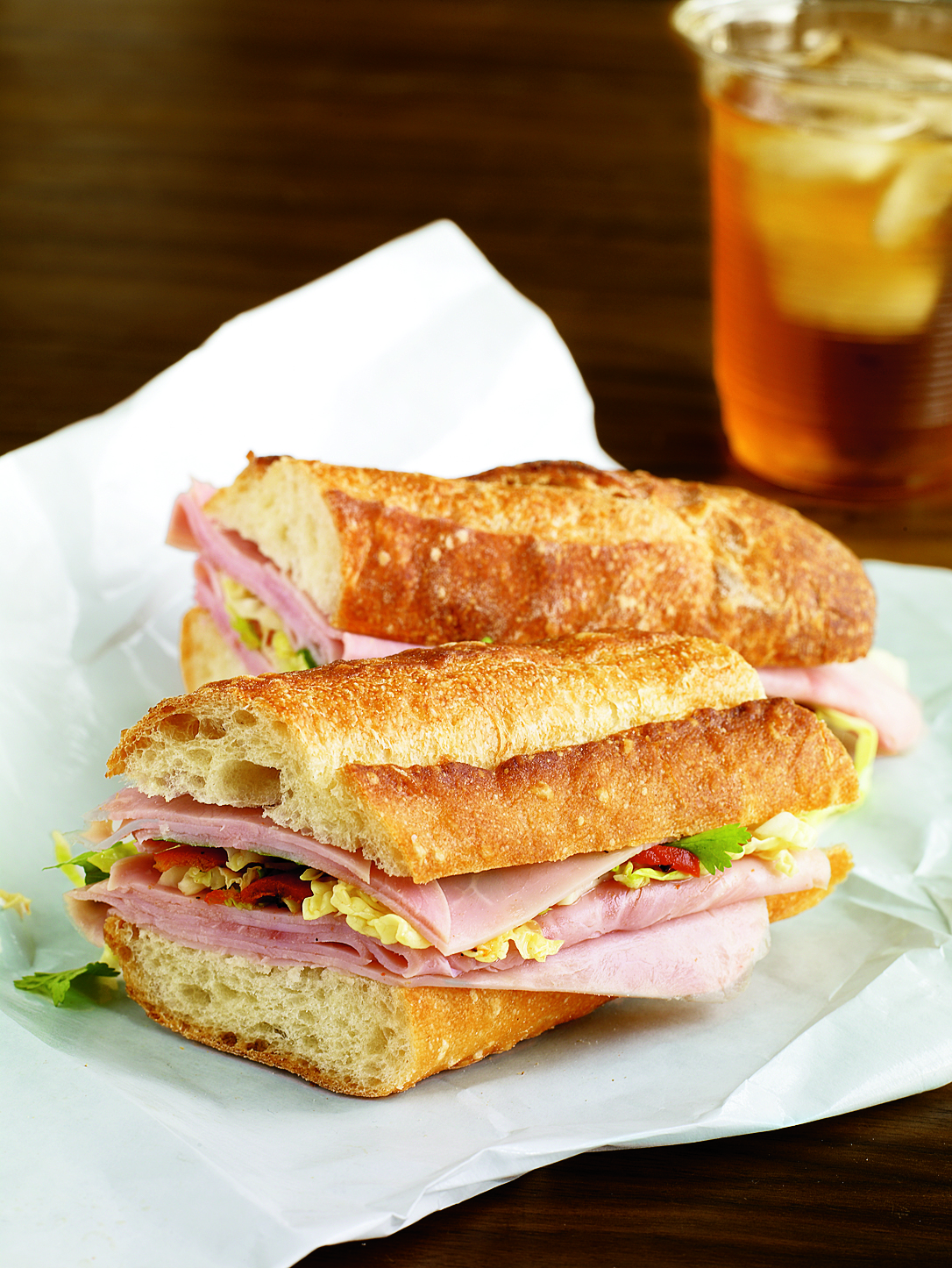
This article originally appeared on RealSimple.com.
Instead of eating out, you decided to be both economical and healthful by packing your own lunch. But what’s inside that brown bag? If, like many Americans, you favor a turkey sandwich, your midday meal is probably a lot less nutritious than you think.
A new study published in the Journal of the Academy of Nutrition and Dietetics reveals that a standard sandwich can account for approximately one-fifth of a person’s total daily sodium intake, yet 49 percent of adults in the United States eat at least one sandwich on any given day.
Based on the 2010 Dietary Guidelines for Americans, the average person should cap their daily sodium intake at 2,300 mg. People 51 and older, African Americans, and those who have high blood pressure, diabetes, or chronic kidney disease should not exceed 1,500 mg of sodium per day. Based on these guidelines, approximately half of the population falls into the latter category, yet the average American consumes as many as 3,300 mg of sodium each day (eating too much sodium can put you at risk for serious health conditions, like high blood pressure, heart disease, and stroke).
(MORE: 3 Easy Hacks to Get Healthier at Work)
Why are sandwiches eating up such a large portion of our sodium allowance? For starters, two major components of a sandwich—bread and lunch meat—both fall into the American Heart Association’s “salty six,” a list of popular foods that contain excess sodium. When these ingredients are layered, as they are in sandwiches, and paired with accompaniments like chips or soup, the amount of sodium can really add up—and quickly.
While a typical homemade sandwich (not the jumbo sandwiches they serve at most dining establishments) can have as much as 1,500 mg of sodium, there are ways to create a less sodium-laden lunch, explains Dawn Jackson Blatner, R.D., author of The Flexitarian Diet. If you’re set on a sandwich, heed this expert advice on building a better one:
Bread
When selecting bread, check nutrition labels to find a low-sodium variety. Generally, an item with 5 percent or less sodium is considered low-sodium (anything with 20 percent or more is considered high-sodium), explains Blatner.
If you can’t find a low-sodium option or are dining out, choose plain bread (like whole wheat honey oat) instead of cheese varieties (like parmesan crusted), suggests Toby Smithson, R.D.N., author of Diabetes Meal Planning and Nutrition for Dummies.
To further reduce the sodium content, opt for an open-faced sandwich or ask to have your bagel or roll scooped out. Wrapping your sandwich in dark leafy greens, like collard greens, is also a healthier choice.
(MORE: 11 Superfoods You Should Know About)
Lunch Meat
“Fresh meats such as fresh turkey or chicken slices are a better choice than deli meat for lowering the sodium content of your sandwich,” says Smithson. “Cook extra for dinner and use the sliced leftovers for lunch.”
Rotisserie chicken, which is often pumped with flavorful and sodium-rich brine may be a shortcut, but it’s not a good substitution if you’re trying to cut your sodium intake, warns Blatner.
Instead of lunch meat (six thin slices can contain as much as half of your daily recommended sodium intake), try a hummus and vegetable sandwich, like this Real Simple favorite, or a savory nut butter sandwich, like this one.
(MORE: 9 Healthy Predinner Snacks)
Cheese
Always choose the less processed option, explains Blatner. Selecting Swiss cheese over a heavily processed cheese, like American, will save you about 360 mg sodium per ounce, adds Smithson.
Opting for extra thin sliced cheese at the grocery store will also save on sodium, says Blatner. Or, if you’d prefer to swap out the cheese altogether, avocado will provide the same creamy fattiness cheese has.
(MORE: The 30 Healthiest Foods)
Accompaniments
Condiments like mustard, pickles, jalapeno peppers, and banana ring peppers may seem like small additions, but they can also be high in sodium, says Smithson. Load up on fresh veggies (leafy greens, tomato slices, or onion) instead.
Piling up on vegetables—particularly those rich in potassium—has more than the obvious benefits: It can help balance out all the salt and protect you from some of the ill-effects of sodium, adds Blatner.
More Must-Reads from TIME
- Where Trump 2.0 Will Differ From 1.0
- How Elon Musk Became a Kingmaker
- The Power—And Limits—of Peer Support
- The 100 Must-Read Books of 2024
- Column: If Optimism Feels Ridiculous Now, Try Hope
- The Future of Climate Action Is Trade Policy
- FX’s Say Nothing Is the Must-Watch Political Thriller of 2024
- Merle Bombardieri Is Helping People Make the Baby Decision
Contact us at letters@time.com